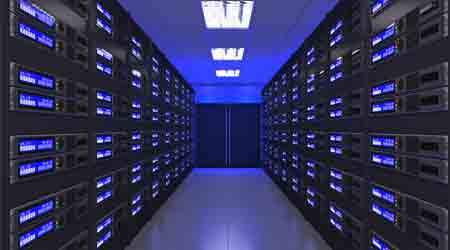Data Center Energy Efficiency Targets Include Temperature, Humidity Adjustments; Economizers
Last of a 2-part article describing 12 proven energy-saving strategies for data centers
Here are eight more best practices from Energy Star that provide energy efficiency opportunities for smaller data centers. They include temperature and humidity adjustments, air- and water-side economizers, and the elimination of unused servers.
5. Server inlet temperatures and humidity adjustment: ASHRAE has expanded the recommended server inlet temperature to range from 65 to 80 degrees F and expanded recommended humidity ranges to include 42 to 59 degrees F dew point. Many data centers continue to set their thermostats at temperatures that are too low or their allowable humidity ranges too tight. BNY Mellon raised the temperature of its supply air from 72 to 78 degrees F, which allowed it to increase its chilled water temperature from 44 to 47 degrees F, thus lowering cooling costs.
6. Air-side economizer: Because data centers must be cooled 24 hours a day, 365 days per year, cooler evening or winter air can be used to cool a data center even in warmer climates through an air-side economizer. NetApp’s global dynamic laboratory, the first data center to earn the Energy Star certification, owes much of its savings to air-side economizers. Using outside air allows that data center to operate without a chilled water plant for more than 75 percent of the year.
7. Water-side economizer: For data centers with chilled water plants, a water-side economizer uses the evaporative cooling capacity of a cooling tower (instead of the chiller) to cool the data center. This measure is best suited for a large expansion or new construction, as water-side economizer retrofits may have long paybacks.
8. Comatose server retirement: Surveys indicate that 8 to 10 percent of servers are actually not doing anything. Sun Microsystems cut 8 to 10 percent of IT equipment load and 11 to 14 percent of total load by retiring or decommissioning unused servers.
9. Server consolidation: Data center managers can reduce the total number of servers by putting more applications on fewer machines. For example, two or three lightly used file servers can be consolidated onto one machine.
10. Server virtualization: A type of server consolidation, server virtualization allows multiple virtual servers to work simultaneously on one physical host server. Server virtualization has revolutionized data center management — improving scalability, reducing downtime, and enabling faster deployments — and is commonplace in large data centers but much less common in smaller data centers. Southwestern Illinois College performed a detailed three-year total cost of ownership analysis of placing 35 virtual servers on four physical host servers; it showed $280,000 in total savings in direct and indirect costs.
11. Data storage best practices: Automated storage provisioning (right-sizing, re-allocating unused storage, and improving use of existing storage), data compression, deduplication (removing duplicate copies), and tiered storage lead to less storage use and hence, less energy consumption.
12. More efficient IT equipment: Energy Star-certified servers, storage equipment, and uninterruptible power supplies (UPS) consume power more efficiently. Tests conducted jointly by EPA, Hewlett-Packard, and Microsoft demonstrated that a new Energy Star server at low loads consumed 54 percent less power than older, non-certified server models.
These 12 energy-efficiency measures are not cutting-edge technologies that only giant tech companies with high margins can afford. (For example, Google cools one of its data centers with seawater, and Facebook uses direct, not alternating, current to power its custom-built servers.) Rather, these solutions provide a facility manager at a commercial building a viable starting point to begin examining data center efficiency and implementing cost-effective strategies to cut energy savings and associated costs.
Steve Ryan is program manager for Energy Star-labeled office equipment, roofing, water heaters, pool pumps, and HVAC products. He also manages a national initiative called The Low Carbon IT Campaign that includes data center efficiency strategies. Robert Huang, a senior associate at Cadmus, manages the Low Carbon IT campaign.
Related Topics:













